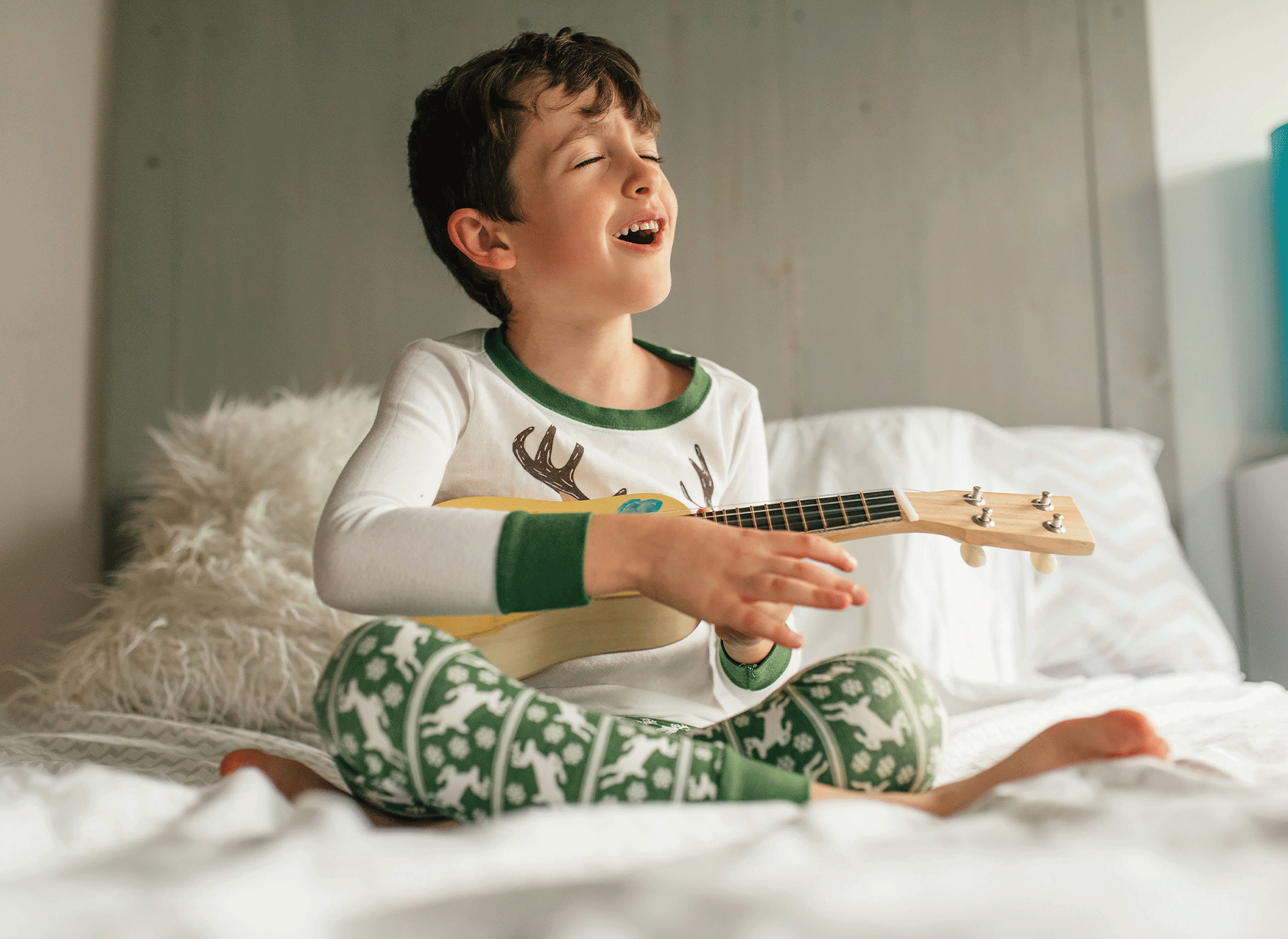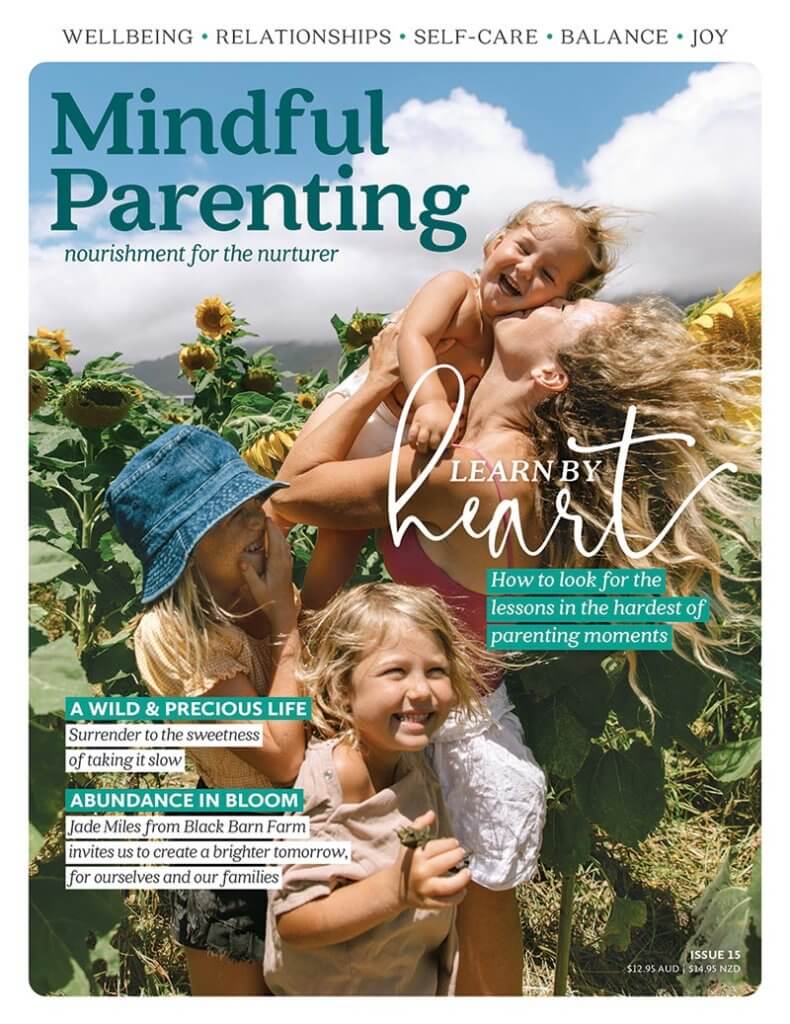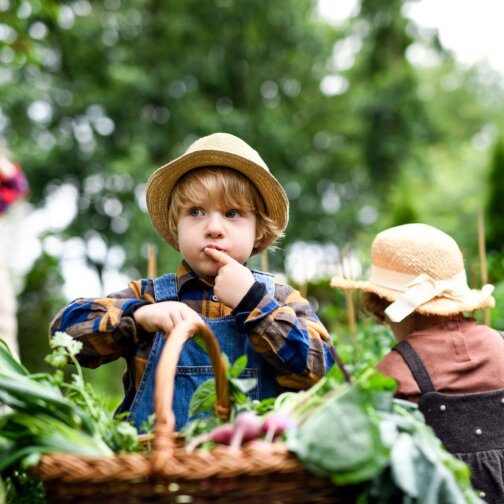
By being playful with their voices our kids learn trust, self-love and authenticity.
We seem to use our most uninhibited voices only when we are little. As a new baby is born, its vociferous first cry serves as a call for care, support, and protection. It also is, quite literally, the human cry of survival. Did you know that when the umbilical cord is cut, the newborn’s lungs come into contact with oxygen for the first time and it starts to suffocate? To breathe again, the baby needs to push the airflow back by a loud, airy shriek.
The human voice
Crying is our earliest vocal behaviour. Evolution created it this way. Thanks to the loud noises it makes, the baby has food and a place to sleep; it is cuddled when cold and changed when wet. Studies show that infants don’t really distinguish between their own voices and the sounds around them. As American psychiatrist M. Scott Peck writes in his book The Road Less Travelled, for a newborn “there are no boundaries, no separation, no identity”. The baby IS its own whimpering and the lullaby its mother sings, just as much as it is the growl of an empty stomach demanding milk. Later in childhood, vocal experiences become the centre of every child’s life. To their parents’ great excitement, babies learn to coo, imitate sounds, and babble the world away, to finally be able to merrily sing their favourite tunes.
In her book The Human Voice, British journalist Anne Karpf calls the voice “the most powerful tool at the heart of the communication process.” Buddhists believe that it is the vessel of love and tenderness. In the shamanic tradition, the voice is the gateway to deeper spheres of the subconscious. American singer and psychologist Silvia Nakkach praises the benefits of vocal yoga practices. She believes that chanting improves health because it brings together elements of breathing and muscle exercises with a soul-nourishing spiritual awakening. “To sing is to enchant!” she says.
Nurture the inner voice
When we grow older, we tend to forget about the natural powers of this most magical instrument we’ve got from nature. We learn to amend our voices, to control the pitch, volume and tone to suit our audiences. “Children should be seen and not heard”, one aunt may have said to us. “Stop shouting!”, we often tell our own kids when they wildly roam our homes and speak freely in restaurants. “You sound like a girl!” – someone may tease a little boy about his gentle manner of speaking. Few people realise that the voice is a thread that binds us all together, and that the way that we – adults – talk to our children becomes their inner voice. Thus, we should nourish it, not try to repress it.
In a couple of recent studies, psychologists found that children try to manipulate their voices very early in their lives, showing an obvious gender bias towards deeper tones. For example, boys as early as four years old would lower their pitch to sound more mature and less ‘girly’. One American study asked children to guess whether a ‘really smart’ protagonist in a story was a man or a woman. By the age of six, most girls were inclined to believe that the protagonist was a man.
Play out loud
Voice coach Mary Thienes-Schunemann says that regular singing encourages the kids to accept their unique voices, promotes self-love, helps to alleviate stress and encourages kids to ‘get out of their heads’. It is also a gym for a child’s body and soul. By deepening the breath and heart rate, it works to strengthen the immune system. Singing also exercises the muscles in the head and neck, which in turn helps to clear the Eustachian tubes, keeping children free from middle ear infections. In his book Brain Rules for Babies, molecular biologist John Medina says that one of the most powerful things about music is that it teaches kids to recognise and mimic various emotional tones, making them more empathetic and trusting. And it obviously boosts their happiness by stimulating the release of endorphins, the body’s pleasure hormones, into the brain and body.
Gari Stein, the founder of American school Music for Little Folks, claims that the musical activities are key components of learning. “Childhood goes by in a whoosh. Don’t let it pass by while you are busy doing other things. Babies do not come to this world wanting to learn ABCs, 123s, colours and shapes. Let them play, sing and dance and you’ll see miracles happening!” she advises.

Mindful Vocal Practice
Yogic ‘Om’ is a simple sound with a strong vibration. In Sanskrit ‘mantra’ is a word for ‘sound tool’, used to relax the mind before the meditation. Try sitting with your kids on the floor for a little chanting practice. Start with a simple breathing exercise – breathe in counting to six, then exhale the same way, making a ‘whoosh’ sound. Repeat a few times and follow with a couple of light stretches. My favourite is the ‘bananasana’ – the banana pose. It is a spinal side bend, performed either standing up or lying down. Later, ask the kids to sit with crossed legs, close their eyes and chant a long ‘Om’, tuning into the sounds and trying to match each other’s pitch. During group vocalisations (whether it’s Buddhist mantras or Gregorian chants), the heart rates of all participants synchronise, starting to beat at the same rate.
Nourish you child’s musical mind and ignite the superpowers of the voice:
Join in
The beauty of kids’ vocal experiments is that they are completely spontaneous. As parents, we should participate, whatever our own experience with singing. It can be highly freeing for our voices as well. Remember that most children won’t be able to sing accurate melodies and lyrics until around ages three or four years, so don’t expect to hear the real versions of Love is All Around. Humming ‘la la la’ can be enough of a practice. With little babies (up to 6 months old), you can imitate the sounds they make for a couple of minutes daily. It encourages them to be more vocal, helping the development of language in the future!
Make time for short musical activities
Practising music often – at least 5-10 minutes every day – is very beneficial for the brain. Try to incorporate singing and dancing into your daily routine. You can play upbeat songs for when the kids get dressed, for bath time and teeth cleaning, and calmer ones just before bed to help them wind down. Use an old CD stereo rather than a phone or a tablet as to not encourage watching videos.
Encourage your kids to perform
Create little live concerts for family and friends. Let everyone pick a song, rehearse a bit and dress up too, if this is an option. Build a stage with chairs and blankets and have everyone take turns in singing at the top of their lungs.
Practise communal singing
Music educator Edwin Gordon emphasises that children develop their ‘singing voice’ by imitation. He recommends exposing them to adept singers, and in particular to other children who sing. So why not take your kids to various music performances – community concerts, choirs, and musical picnics?























